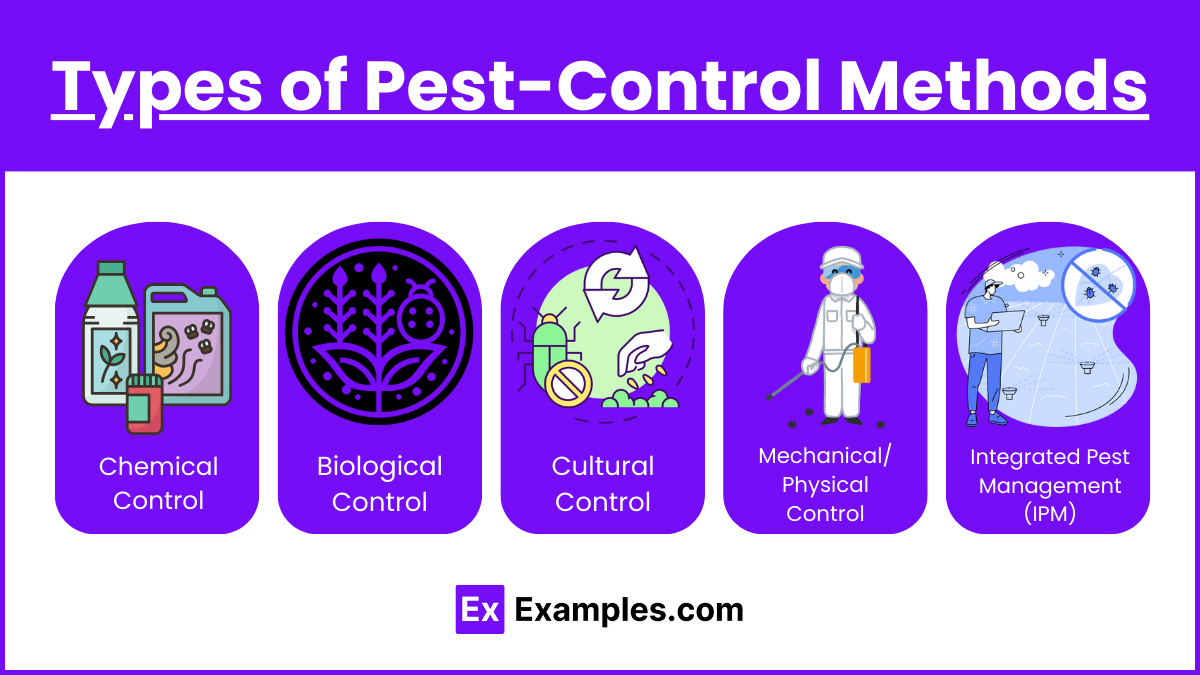Little Known Facts About Pestwise.
Wiki Article
The Definitive Guide to Pestwise
Table of ContentsExcitement About PestwiseSome Known Questions About Pestwise.Not known Facts About PestwiseAll about PestwiseUnknown Facts About PestwisePestwise - TruthsThe Greatest Guide To Pestwise

Q. Specify "integrated insect management" (IPM) and list several feasible control strategies that may be made use of in an IPM method. A. Integrated insect monitoring is the integrating of suitable parasite control methods into a solitary plan to reduce parasites and their damage to an appropriate degree. Insect control tactics might include: host resistance, organic control, social control, mechanical control, cleanliness, and chemical (chemical) control.
Some Ideas on Pestwise You Need To Know
What can you do to keep the insects you are trying to manage from becoming resistant to the chemicals you make use of? A. Pest resistance can be minimized by making use of integrated insect administration and rotating the kinds of pesticides made use of.Bugs are a critical danger to the farming business, and incorporated pest monitoring helps cultivators address and alleviate these threats. Integrated pest management utilizes numerous methods in complex, thus being a much more efficient service to the concern. Pest Control. Particularly, eliminating aggressive chemical approaches permits minimizing injury to individuals and the setting by utilizing natural and safer options instead
Little Known Facts About Pestwise.
The objective of integrated pest administration is to decrease this damage and control acceptable problem degrees as opposed to eliminate all unwanted populations. This is why it is very important to recognize what procedures are justified in each case and usage aggressive ones just when other incorporated administration techniques do not work. Integrated monitoring minimizes the adverse repercussions of a non-IPM method, and the major advantages of IPM Advantages of IPM.A correct understanding of the problem range figures out if the issue should be addressed. are the next components of an IPM program due to the fact that it is very important to recognize if the microorganisms make potential risks and select the integrated administration choices or the particular pesticide use. mean to reduce problems by using different agronomic strategies.
The Pestwise PDFs
Integrated administration options in an IPM program beginning with safer to a lot more hostile ones. The above-mentioned integrated management aspects aid recognize exactly how to plan and implement an IPM program action by action: Screen your crops frequently.
To name a few, IPM social methods include the adhering Visit Your URL to field administration methods: dirt therapy; selection of appropriate plants; plant turning; interplanting or strip chopping; selection of planting days; weed control; usage of catch plants. Beneficial dirt problems speed up plant development, and strenuous plants are more resistant to problems. Termite Control. In incorporated parasite monitoring, dirt testing assists understand if the area appropriates for the manufacturing of this or that crop, and afterwards apply the doing not have nutrients to make sure plant healthy and balanced development
Examine This Report about Pestwise
No-till methods aid prevent soil erosion, contributing to sustainable farming. When tilling is essential, it is suggested to conduct it in the autumn to expose them to all-natural adversaries and serious climate. Healthy seed startings and seeds predetermine effective crop advancement, so it is necessary to pick pest-free planting material with solid roots.Therefore, amongst various other applications, crop rotation can be properly used as an integrated insect administration approach. Vermin spread out slower if rows of different crop types divide their host plants in intercropping or strip chopping, which is also made use of in the integrated bug monitoring system. On the other hand, problems raise when plants of the same crop type or family grow together.
, as well as tomatoes. Planting trap plants in spots is an additional choice for IPM intercropping. This integrated insect management approach recommends drawing in pests to specific plants and after that managing them with chemical or mechanical methods.
About Pestwise
Barriers are regular examples of physical IPM techniques. Fully grown insects or their eggs and larvae are collected by hand and ruined.
Division of Plant Sciences. This incorporated monitoring technique suggests a typical means of damaging pests by predators, parasitoids, pathogens, and other biological control agents (aka hostile microorganisms). The function of organic control in IPM is to.
Not known Details About Pestwise
With time, their population transformed out to be an actual nuisance to farmers alongside indigenous kangaroos or dingoes. The cane toad is another instance highlighting incorporated biological control failure in this regard when it refused to quest the target varieties and came to be a parasite itself. Parasitoids establish on or within their hosts to ultimately kill them after maturing.Report this wiki page